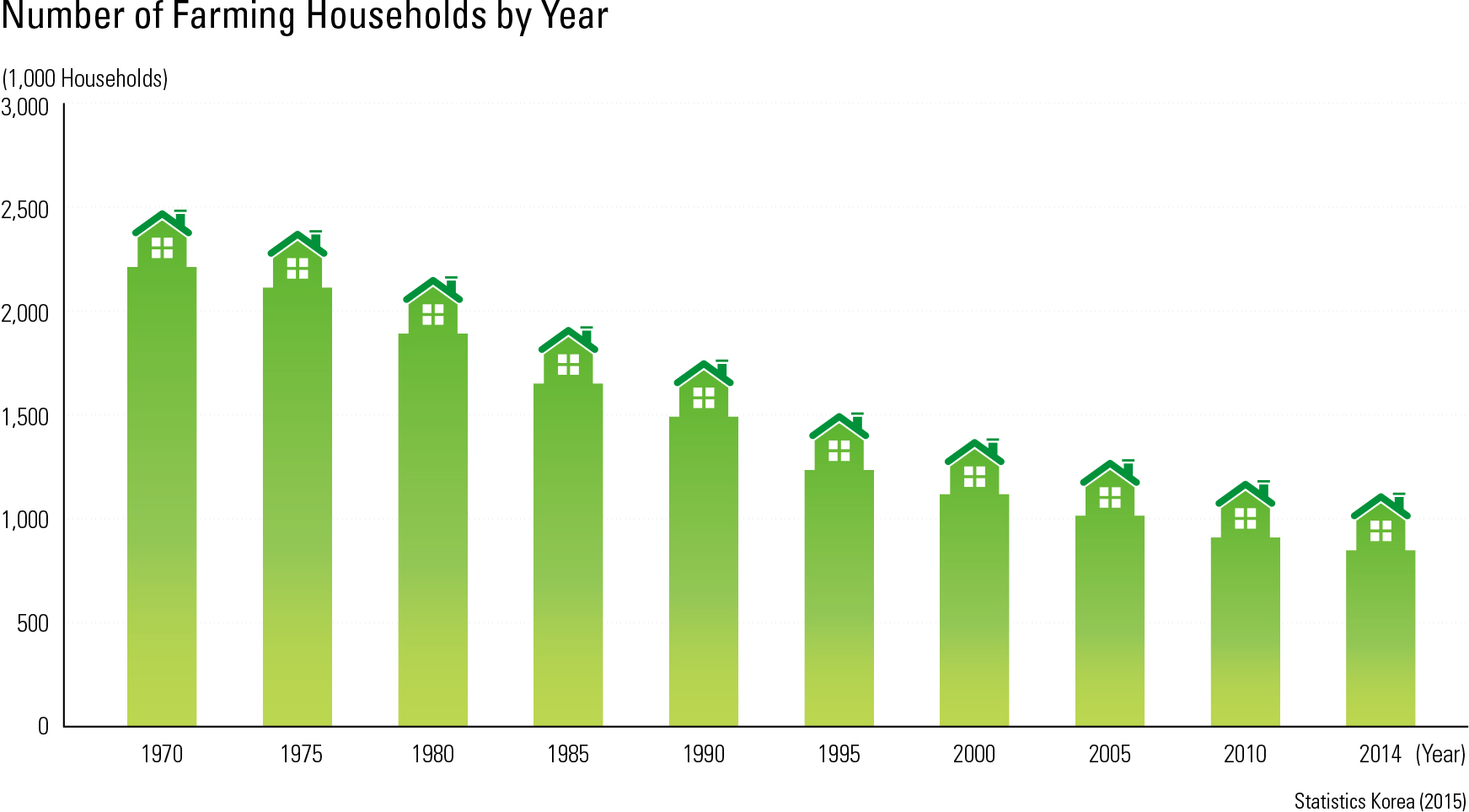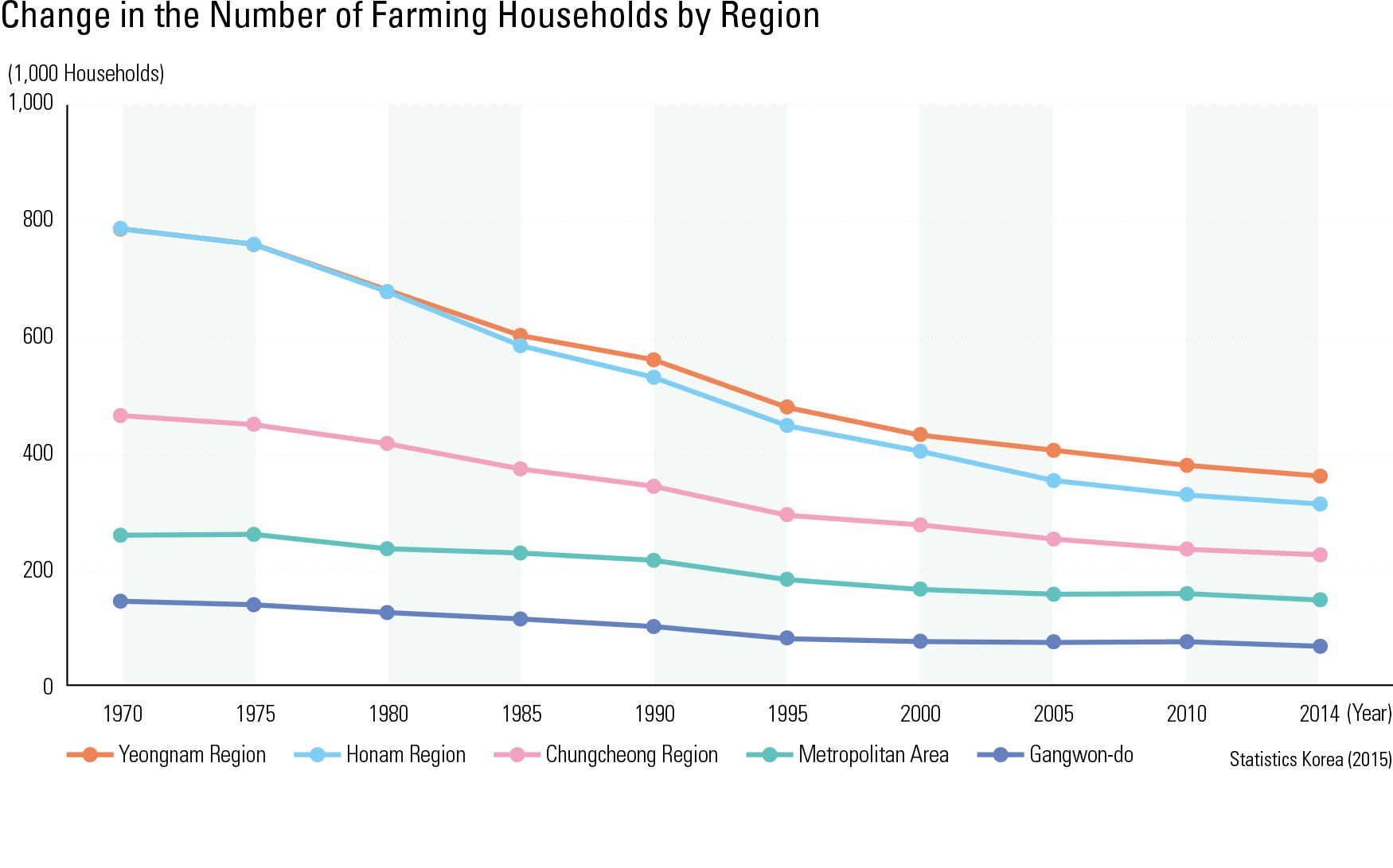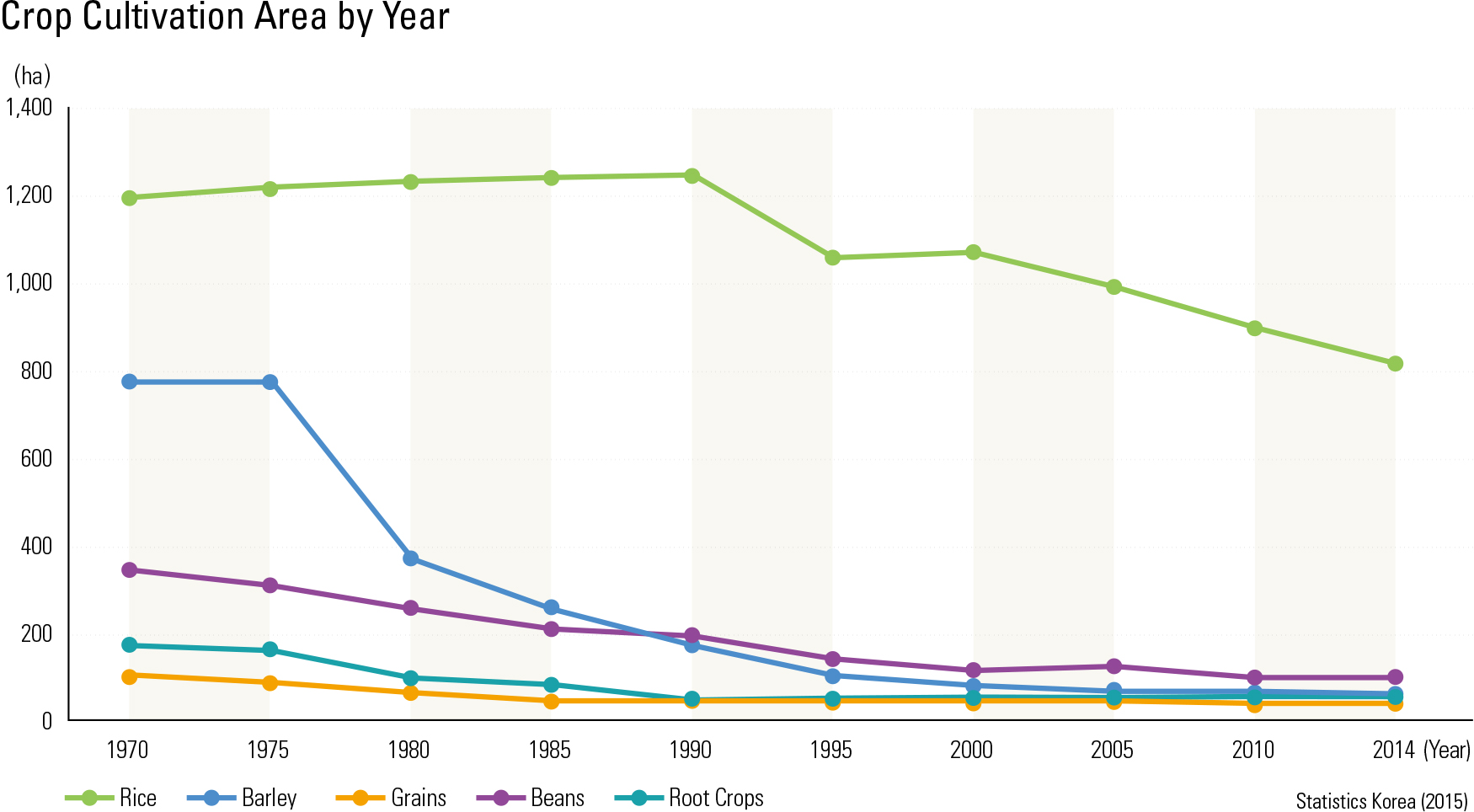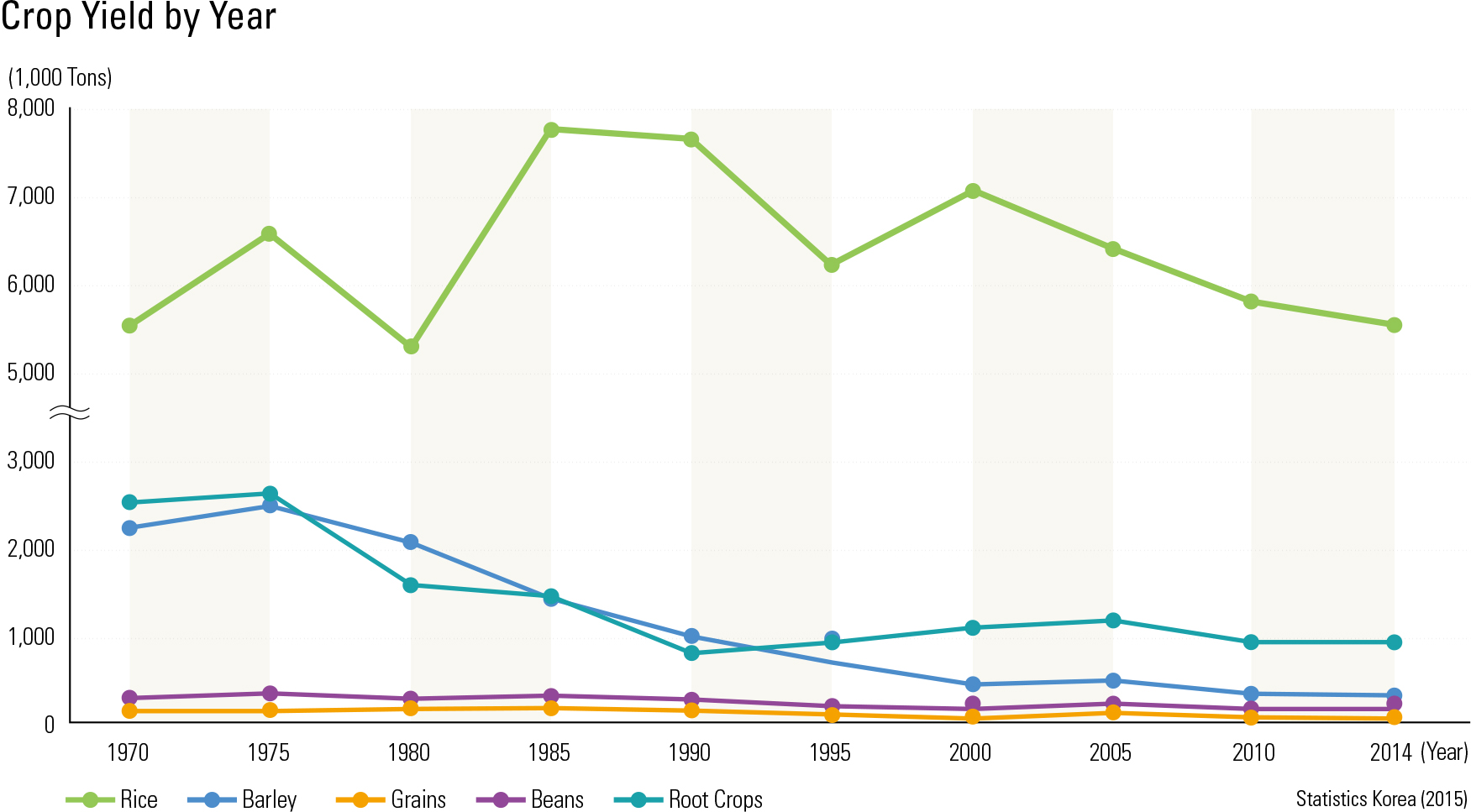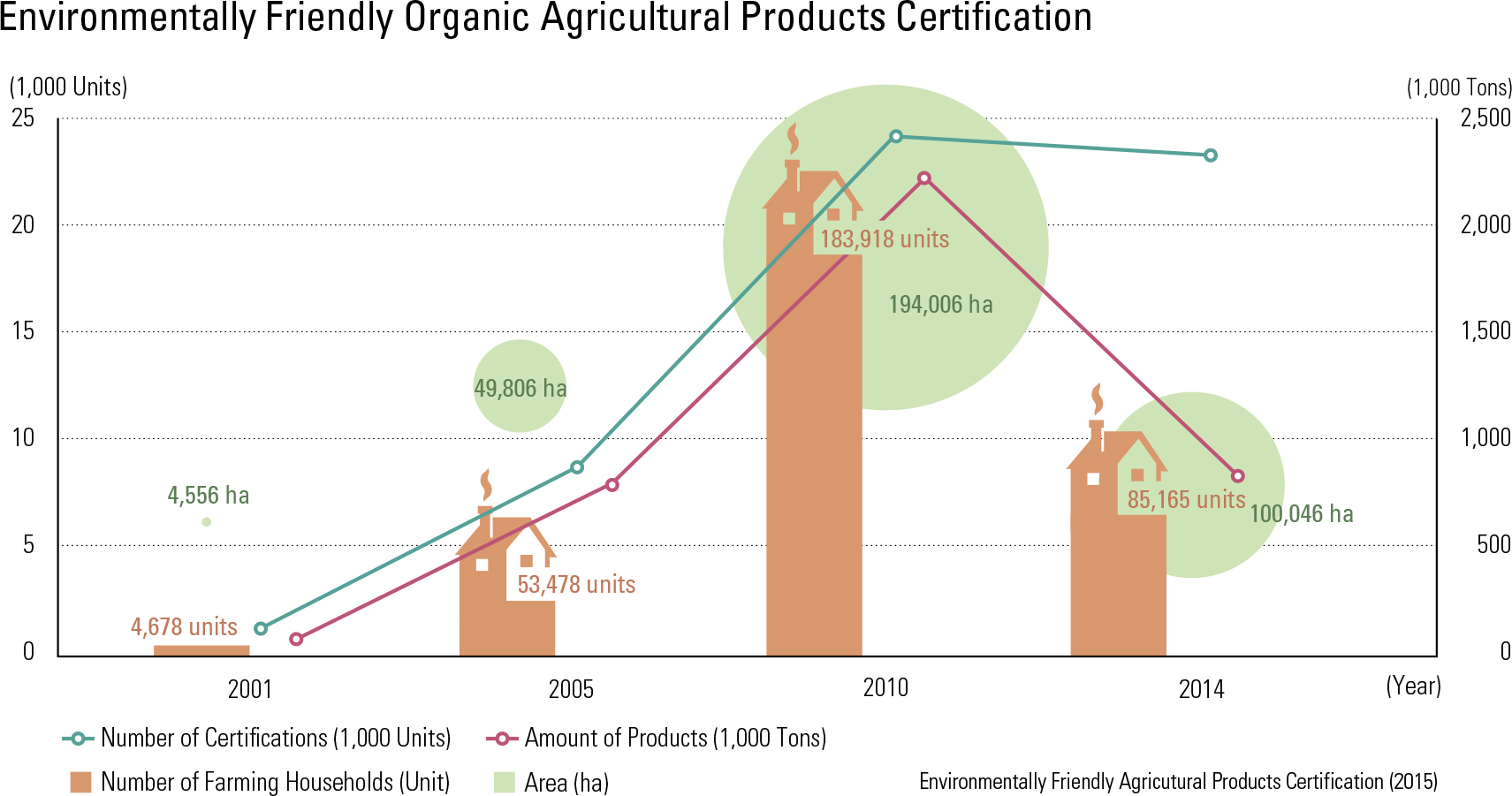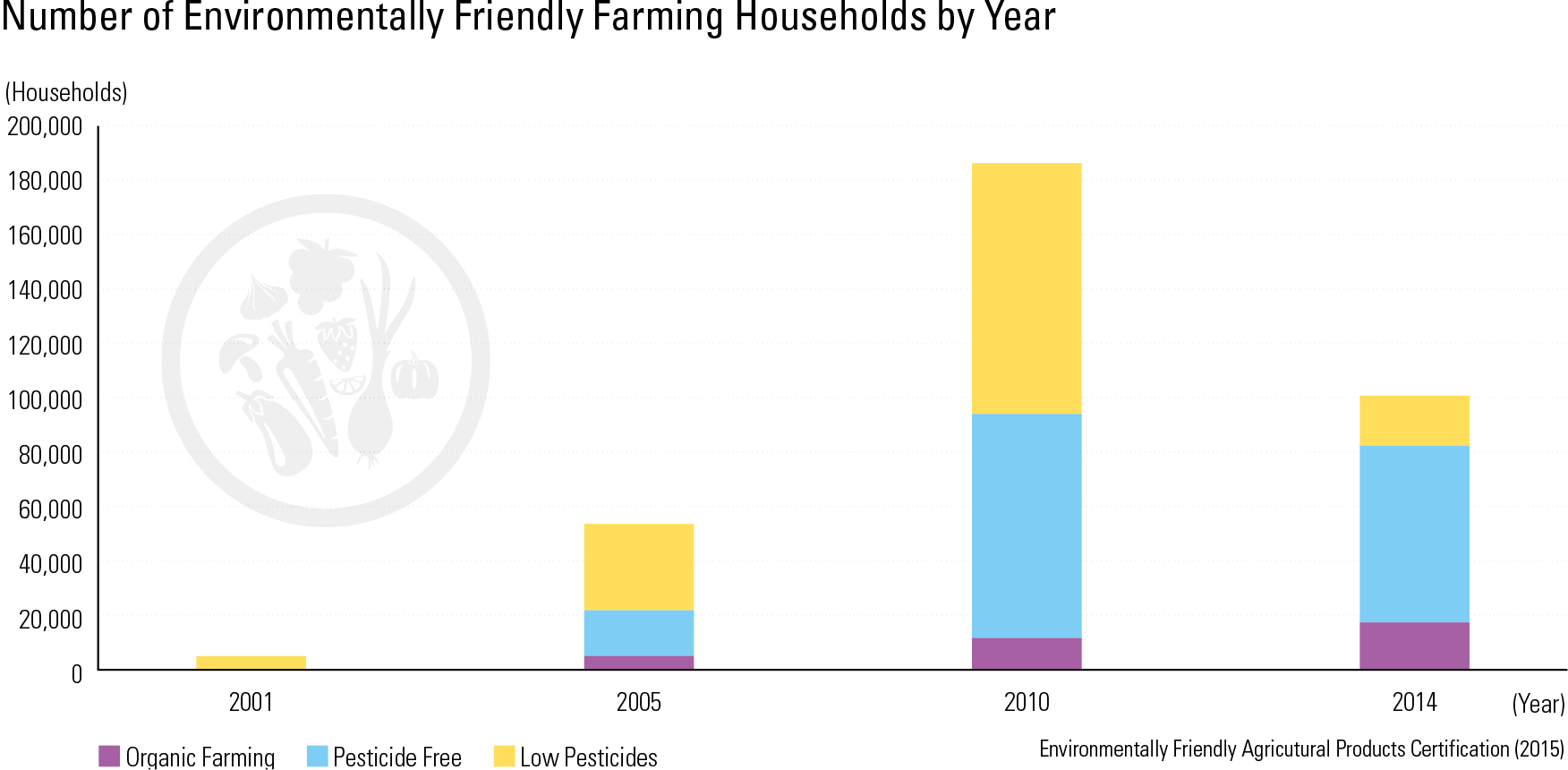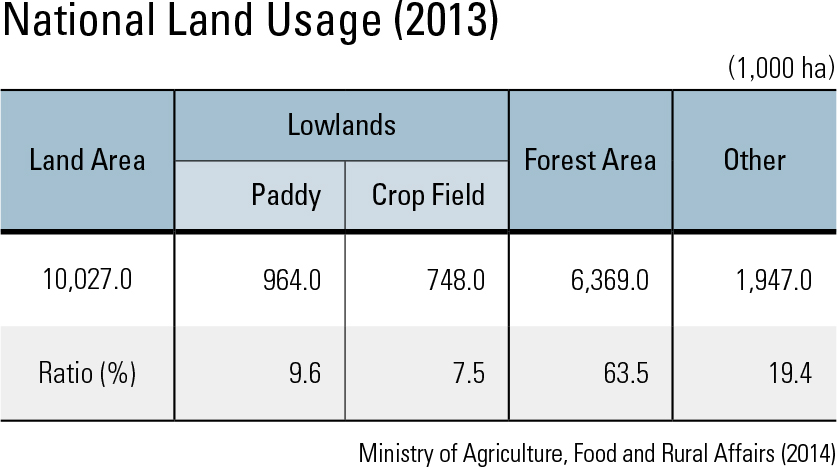English II
As of 2013, the total land area of South Korea is 10,027,000 ha. Arable areas are estimated to be 1,712,000 ha, constituting 17.1% of the total land area. These areas consist of paddy elds and farm elds, which each comprise ar- eas of 964,000 ha and 748,000 ha, respectively. 6,369,000 ha (63.5%) of South Korea's terrain is mountainous with forests. Since the 1970s, Korea has been experiencing rapid change in its economic structure. It shifted from an agrarian society to a post-industrial so- ciety, consequently bringing about a diminished social reliance on soil. In 2014, the total number of farming households was estimated to be 1.12 million, a 54.8% decrease from 2.48 million in 1970. The agricultural population also dramat- ically decreased by 81% from 14.42 million in 1970 to 2.75 million in 2009. Arable land area in Korea increased until the mid-1970s due to active land reclamation in coastal regions. However, industrialization and urbanization has prompted a constant decline in arable lands ever since. In 1975, Korea had a total of 2.24 million ha of cultivated land; by 2014, that sum was reduced to 1.70 million, re- ecting a 24% decrease over a span of 40 years. The total area of paddies in 2014 is 0.93 million ha, making up 55% of all cultivated land. While paddies have been on a constant decrease since 1988, the area of farm fields only experienced a slight decline over the same time period, remaining at 0.7 million ha since the 1980s. Starting in 2008, farm fields actually began to spread as economic growth encouraged farmers to grow more fruit trees and other cash crops. Due to the drop in rural agricultural population, cultivated land per household is steadily in- creasing, experiencing a growth from 0.94 ha in 1975 and 1.11ha in 1985 to 1.51 ha in 2014. Yield per unit area is also increasing steadily. Rice production in 1975 was 5.5 tons/ha, but jumped to 6.9 tons/ha in 2014. Despite showing a massive decrease in area, paddy yields expe- rienced a 2.3% increase from 5.55 million tons in 1971 to 5.68 million tons in 2014. This long- term enhancement in crop production bene ted largely from the genetic improvement of rice varieties, mechanization of agriculture, fertiliz- er, and advancement of farming techniques. Barley has undergone the largest drop in both yield and area. In the early 1970s, barley pro- duction was close to 2.50 million tons; in 2014, however, the recorded yield was 0.26 million tons. Other crops such as beans, potatoes, sweet potatoes, and grains are also declining, but are relatively more stable than rice and barley. In recent years, improved income levels and interest in health have introduced a newfound demand for environmentally friendly produce. Since 2000, the government-run Environmental- ly Friendly Agricultural Products Certification has rapidly gained popularity with its positive effects on environmental conservation and produce safety. Recently, the government im- plemented measures to abolish the certi cation of low pesticide products, which occupied the highest ratio among organic, non-pesticide, and low pesticide products. This has caused a drastic decrease in certi ed producers of low pesticide crops. Nonetheless, organic product certi cation – which is the most dif cult to achieve in terms of technique – is constantly increasing.
page_2 |
